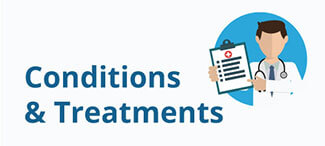WHAT IS A CAESAREAN SECTION?
Caesarean section delivery, also known as a C-section, is a surgical procedure used to deliver a baby through an incision in the mother’s abdomen and a second incision in the mother’s uterus. Planned caesarean sections are scheduled well before labour begins.
There are two subgroups: Patient-requested C-sections and indication-based C-sections
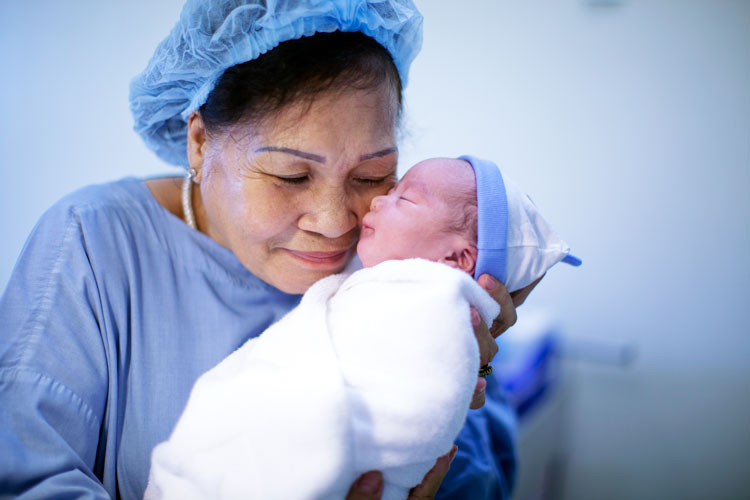
WHEN CAN I REQUEST A C-SECTION?
All women considering a caesarean, for whatever reason, should be fully informed of the realities involved, including the possible challenges of recovery. Women should also be aware that caesareans are not without risk and that although these may be small, for the unlucky few they can be quite significant. It also takes longer to recover from a C-section than from vaginal birth.
Patient-requested C-sections (planned, without medical indications) must never be scheduled before at least 39 weeks of pregnancy to ensure proper foetal lung maturity, before that, the risk of foetal respiratory distress is significant. As published in the New England Journal of Medicine in 2009, elective cesarean sections performed after 37 or 38 weeks of pregnancy have up to four times the risk of serious complications compared with procedures done after 39 weeks. Even deliveries that were just one, two or three days shy of 39 weeks carry a 21% increased risk of complications, the study found.
Most women who had a C-section can safely give vaginal birth later.
WHAT CONDITIONS REQUIRE AN INDICATION-BASED C-SECTION?
Indication-based C-sections (planned, with medical indications) are usually scheduled at the doctor’s request when a patient suffers from, or is at great risk of, a medical problem that could result in labour that would harm her or the baby. The main indications are:
- Breech (feet-down) presentation: Women who have an uncomplicated singleton breech pregnancy at 36 weeks’ gestation should be offered external cephalic version (a procedure during which hands of the doctor are placed on the mother’s abdomen around the baby. The baby is moved up and away from the pelvis and gently turned in several steps from breech, to a sideways position, and finally to a head first presentation). Exceptions include women in labour and women with a uterine scar or abnormality, foetal compromise (foetal distress), ruptured membranes, vaginal bleeding or medical conditions. Pregnant women with a singleton breech presentation at term, for whom external cephalic version is contraindicated or has been unsuccessful, should be offered C-section because it reduces perinatal mortality and neonatal morbidity
- Multiple pregnancies: In otherwise uncomplicated twin pregnancies at term C-section should not routinely be offered. In twin pregnancies where the first twin is not cephalic current practice is to recommend a planned C-section.
- Large babies: (more than 4 kg) are often delivered by planned C-section.
- Placenta praevia: women with a placenta that partly or completely blocks the uterus (minor or major placenta praevia) should be offered a planned C-section.
- Baby with health concern: A C-section is sometimes safer for babies who have certain developmental conditions, such as excess fluid in the brain (hydrocephalus).
- Mothers who suffer from chronic conditions that could be exacerbated by labour, like diabetes, high blood pressure or heart disease, may be offered a planned C-section by their doctor.
- To prevent mother-to-child transmission of HIV C-section must be offered to women who are not receiving any anti-retroviral therapy or are receiving anti-retroviral therapy but have a viral load of 400 copies per ml or more.
- Women with primary genital herpes simplex virus (HSV) infection occurring in the third trimester of pregnancy should be offered planned C-section because it decreases the risk of neonatal HSV infection.
- Previous C-section: depending on the type of uterine incision and other factors, it’s most of the time possible to attempt a vaginal delivery after a previous C-section (VBAC). In some cases, however, your health care provider might recommend a repeat C-section (see below in this brochure the sections about VBAC).
WHAT ARE THE RISKS OF C-SECTION?
Recovery from a C-section takes longer than does recovery from a vaginal birth. You can expect to stay 3 to 4 days in the hospital after a C-section. Full recovery usually takes 4 to 6 weeks. Like other types of major surgery, C-sections also carry a higher risk of complications.
Risks to your baby include:
- Breathing problems: babies born by C-section are more likely to develop Transient Tachypnea, a breathing problem marked by abnormally fast breathing during the first few days after birth. C-sections done before 39 weeks of pregnancy or without proof of the baby’s lung maturity increase the risk of other breathing problems, including respiratory distress syndrome, a condition that makes it difficult for the baby to breathe.
- Surgical injury: although rare, accidental nicks to the baby’s skin can occur during surgery.
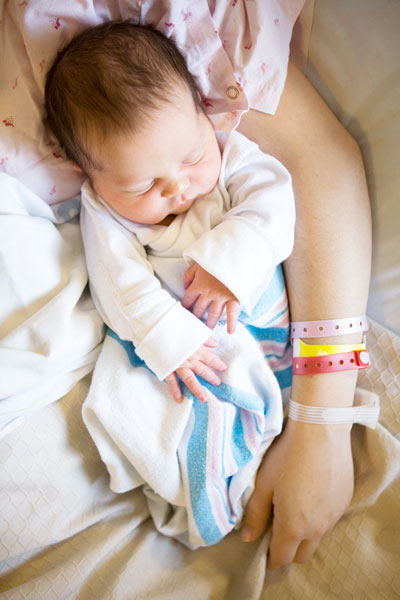
Risks to you include:
- Inflammation and infection of the uterus: This condition, known as endometritis, can cause fever, foul-smelling vaginal discharge and uterine pain.
- Increased bleeding: you’re likely to lose more blood with a C-section than with a vaginal birth. Transfusions are rarely needed, however.
- Reactions to anaesthesia: adverse reactions to any type of anaesthesia are possible. After an epidural or spinal block, common types of anaesthesia for C-sections, it’s rare, but possible, to experience a severe headache when you’re upright in the days after delivery.
- Blood clots: the risk of developing a blood clot inside a vein, especially in the legs or pelvic organs, is greater after a C-section than after a vaginal delivery. If a blood clot travels to your lungs (pulmonary embolism), the damage can be life-threatening. Your health care team will take steps to prevent blood clots. You can help, too, by walking frequently soon after surgery.
- Wound infection: an infection at or around the incision site is possible.
- Surgical injury: although rare, surgical injuries to nearby organs, such as the bladder, can occur during a C-section. If this happens, additional surgery might be needed.
- Increased risks during future pregnancies: after a C-section, you face a higher risk of complications in a subsequent pregnancy, including bleeding and problems with the placenta, than you would after a vaginal delivery. The risk of uterine rupture is also higher, even though this complication remains very rare.
WHAT CAN YOU EXPECT?
An average C-section can usually be done in less than an hour. In most cases, your spouse or partner can stay with you in the operating room during the procedure.
A few days before your C-section, you will see an anaesthesiologist.
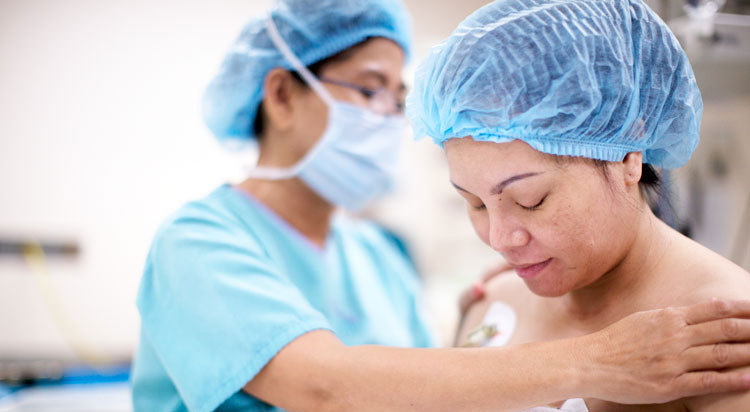
At the hospital, before and during the procedure
- You will usually be hospitalised the night before the C-section. You might be asked to shower or bathe with an antibacterial soap the night before and the morning of the C-section. This helps reduce the risk of infection. Do not shave your pubic hair the day before your operation. Do not eat or drink anything for 6 hours before your scheduled surgery time. Just before the procedure a member of your health care team will cleanse your abdomen. A tube (catheter) will likely be placed into your bladder to collect urine. Intravenous (IV) lines will be placed in a vein in your hand or arm to provide fluid and medication.
- Anaesthesia: most C-sections are done under regional anaesthesia, which numbs only the lower part of your body, allowing you to remain awake during the procedure and able to hear and see the baby right after delivery. A common choice is a spinal block, in which pain medication is injected directly into the sac surrounding your spinal cord. Another option might be epidural anaesthesia, in which pain medication is injected into your lower back just outside the sac that surrounds your spinal cord. General anaesthesia is sometimes needed. With general anaesthesia, you won’t be able to see, feel or hear anything during the birth.
- Abdominal incision: the doctor will make an incision through your abdominal wall. It’s usually done horizontally near the pubic hairline (bikini incision). If a large incision is needed or your baby must be delivered very quickly, the doctor might make a vertical incision from just below the navel to just above the pubic bone.
- Uterine incision: after the abdominal incision, the doctor will make an incision in your uterus. The uterine incision is usually horizontal across the lower part of the uterus (low transverse incision). Other types of uterine incisions might be used depending on the baby’s position within your uterus and whether you have complications, such as placenta praevia.
- Delivery: if you have epidural or spinal anaesthesia, you’ll likely feel some movement as the doctor gently removes the baby from your uterus, but you shouldn’t feel pain. The doctor will clear your baby’s mouth and nose of fluids, then clamp and cut the umbilical cord. The placenta will be removed from your uterus, and the incisions will be closed with sutures.
- Immediate skin-to-skin care, a natural process that involves placing your naked newborn chest down on your chest and covering the infant with blankets to keep it dry and warm, will be done whenever possible (if your condition allows it)
- Your baby will be taken to a warmer in the operating room, where he or she will be examined, cleaned, labelled, weighed, measured, and swaddled. Your baby will be given back to you after you returned to your room.
After the operation
- You will be monitored for a couple of hours in the recovery room before being returned to your room.
- A urinary catheter, as well as intravenous infusion, is usually left in place during the first 24 hours, post-operation, or more in rare cases.
- A small drain (pipe) is sometimes left under the abdomen wall for a few days.
- Anticoagulant therapy will be given to you to prevent blood clots.
- The abdominal incision will be sore for the first few days. Your doctor can prescribe pain medication for you to take after the anaesthesia wears off.
- Soon after your C-section, you’ll be encouraged to get up and walk. Moving around can speed your recovery and help prevent constipation and potentially dangerous blood clots.
- A normal diet can usually be resumed within two days of the caesarean section.
- While you’re in the hospital, your health care team will monitor your incision for signs of infection. They’ll also monitor your movement, how much fluid you’re drinking, and bladder and bowel function.
- Maternal contact (skin-to-skin): early skin-to-skin contact between the mother and her baby is encouraged and facilitated because it helps mother/baby bonding, foster breastfeeding and reduces infant crying.
- Breastfeeding: women who have had a C-section should start breastfeeding as soon as possible after the birth of their baby.
- Discharge is usually planned for the third postoperative day.
WHAT SHOULD YOU DO WHEN YOU GO HOME?

It takes about four to six weeks for a C-section incision to heal. Fatigue and discomfort are common. While you’re recovering:
- Take it easy: Rest, when possible. Try to keep everything that you and your baby might need within reach. For the first few weeks, avoid lifting from a squatting position or lifting anything heavier than your baby.
- Support your abdomen: Use good posture when you stand and walk. Hold your abdomen near the incision during sudden movements, such as coughing, sneezing or laughing. Use pillows or rolled up towels for extra support while breast-feeding.
- Drink plenty of fluids: Drinking water and other fluids can help replace the fluid lost during delivery and breast-feeding, as well as prevent constipation.
- Take medication as needed: Your doctor might recommend medications to relieve pain. Most pain relief medications are safe for women who are breast-feeding.
- It is recommended to wait about three to four weeks to resume sexual activity
- You may shower or bathe as long as your incision edges are not open. Use a mild soap to gently clean your incision and carefully pat it dry.
Come back to the hospital immedicately in case of:
- Any signs of infection, such as a fever higher than 38°C, severe pain in your abdomen, or redness, swelling and discharge at your incision site
- Breast pain accompanied by redness or fever
- Foul-smelling vaginal discharge
- Painful urination
- Bleeding that soaks a sanitary napkin within an hour or contains large clots
- Leg pain or swelling
In any case, even without any problem, it is recommended to see your obstetrician in consultation about one month after discharge from the hospital.
HOW LONG AFTER A C-SECTION SHOULD I WAIT BEFORE HAVING ANOTHER BABY?
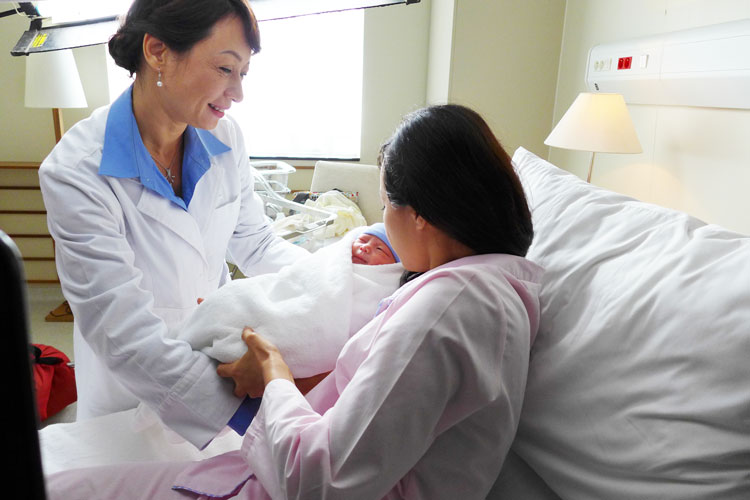
The gap that you should have between your last pregnancy and the next is your decision, although there is evidence that the uterine scar does become stronger over time. Research has looked at different gaps between pregnancies from those grouped as “less than 6 months” up to those grouped as “longer than 2 years”. The risk of uterine rupture or of the scar separating remains small even with small intervals, but gaps of less than 6 months had the highest risk. However, the risks are tiny in all cases and most mothers who go on to have a small gap between pregnancies do not encounter problems.
Child spacing is a very personal decision, which is far more complex than consideration of caesarean scar rupture statistics. It is your decision to make and factors such as your age, how easily you are likely to conceive, your general level of health, and how ready you feel to start another pregnancy, are all likely to be important to you in making that decision.
There are plenty of women who have had perfectly straightforward vaginal deliveries when the gap between pregnancies has been very short.
FV Hospital recommendation is to wait at least 6 months before conceiving another child and there is no medical evidence that supports waiting for one year.
CAN I HAVE VAGINAL BIRTH AFTER CAESAREAN (VBAC)?
If you desire to try a vaginal delivery after having had a caesarean, you should be encouraged by knowing that approximately 80% of women who have previously undergone caesarean birth can successfully give birth vaginally.
The criteria to be considered for VBAC are:
- No more than 2 low transverse caesarean deliveries.
- No additional uterine scars, anomalies or previous ruptures.
- If the original medical reason for a caesarean delivery is not repeated with this pregnancy
- You have no major medical problems
- The baby is a normal size
- The baby is head-down
In what situations would VBAC not be recommended?
- If you are pregnant with twins and the 1st foetus is not in cephalic presentation
If you have gestational diabetes not correctly controlled
In case of suspected foetal macrosomia
If you have high-blood pressure
HOW COMMON IS UTERINE RUPTURE?

There have been lots of research studies into Vaginal Birth After C-section (VBAC), and there is a very large amount of data about the risks of uterine rupture and scar separation.
According to the NICE Caesarean Guideline the rate of rupture during VBAC is 0.35%, which is taken from an audit carried out in the year 2000. According to the American College of Obstetricians and Gynaecologists (ACOG), if you had a previous caesarean with a low transverse incision, the risk of uterine rupture in a vaginal delivery is 0.2 to 1.5%, which is approximately 1 chance in 500. Some studies have suggested increased rates of uterine rupture in women who undergo labour induction, however, recently, the ACOG stated that VBAC is safer than a repeat caesarean, and VBAC with more than one previous caesarean does not pose any increased risk.
There is concern that multiple caesareans would lead to a weaker uterine scar and that risk of rupture would therefore increased. However there is a lack of research evidence to support this theory and an article appearing in the British Medical Journal in 1991 asking “Elective section after two sections – Where’s the evidence?” basically came to the conclusion that there wasn’t any evidence to support this common policy.
In 2007, the Royal College of Obstetricians and Gynaecologists of the United Kingdom have made the following statement: “Women with a prior history of two uncomplicated low transverse caesarean sections, in an otherwise uncomplicated pregnancy at term, with no contraindication for vaginal birth, who have been fully informed by a consultant obstetrician, may be considered suitable for planned VBAC.”
In conclusion, uterine rupture remains a rare event and most women can successfully give birth vaginally after one or even 2 C-sections.
References
Alan T.N. Tita, M.D., Ph.D., Mark B. Landon, M.D., Catherine Y. Spong and al. Timing of Elective Repeat Cesarean Delivery at Term and Neonatal Outcomes. New England Journal of Medicine January 8, 2009 (2009; 360:111-120)
NICE (National Institute for Health and Care Excellence) Guidelines 2011 http://www.nice.org.uk/guidance/CG132/chapter/1-Guidance
http://www.caesarean.org.uk/FAQ.html
http://americanpregnancy.org/labor-and-birth/vbac/
http://www.nhs.uk/conditions/pregnancy-and-baby/pages/caesarean-section.aspx#close
Roberts, Lawrence W; British Journal of Obstetrics and Gynaecology, December 1991, Vol. 98, pp 1199-1202


